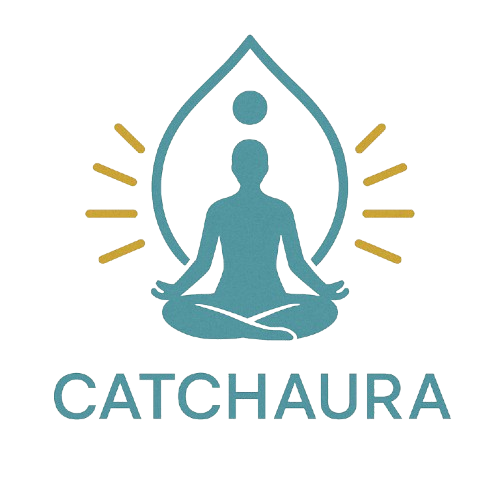The Science of Cold Plunges: How They Supercharge Vagus Nerve & Energy
Estimated reading time: 5 minutes
Key Takeaways
- Cold plunges activate the vagus nerve, reducing inflammation and enhancing energy.
- Regular cold exposure improves mental clarity, recovery, and mood.
- Beginners should start slow, focus on breathing, and maintain consistency.
- Top cold plunge tools include portable ice baths, chiller-integrated tubs, and luxury pools.
- Research supports cold plunges for mental health benefits, including reduced anxiety and depression.
Table of Contents
- Introduction
- How Cold Plunges Activate the Vagus Nerve
- The Benefits of Cold Exposure: Beyond the Hype
- Top Cold Plunge Tubs for Optimal Results
- Cold Plunges and Mental Health: A Deep Dive
- Final Thoughts: Is Cold Plunging Right for You?
- FAQ Section
Introduction
Cold plunges have surged in popularity among holistic health enthusiasts, athletes, and biohackers—and for good reason. Beyond the initial shock of icy water, cold exposure offers profound benefits for the nervous system, energy levels, and mental resilience. At the heart of this practice lies the vagus nerve, a key player in regulating stress, inflammation, and overall vitality.
In this deep dive, we’ll explore the science behind cold plunges, how they activate the vagus nerve, and why this practice is a game-changer for energy optimization. We’ll also highlight top-tier cold plunge tools and resources, including insights from experts like Gary Brecka and research from leading institutions.
How Cold Plunges Activate the Vagus Nerve
The vagus nerve is the longest cranial nerve, connecting the brain to major organs like the heart, lungs, and gut. It’s responsible for the “rest-and-digest” response, counteracting stress and promoting recovery. Cold exposure stimulates this nerve, triggering a cascade of benefits:
- Reduced Inflammation: Cold plunges lower pro-inflammatory cytokines, as noted in studies from Stanford’s longevity research (Jumping into the Ice Bath Trend!).
- Enhanced Energy: By improving mitochondrial efficiency, cold plunges help cells produce energy more effectively.
- Stress Resilience: The shock of cold water trains the body to handle stress, akin to “resetting” the nervous system (Reset Your Brain Instantly With Your Vagus Nerve).
Practical Tips for Cold Plunge Beginners
- Start Slow: Begin with 30-second immersions and gradually increase.
- Control Breathing: Deep, rhythmic breaths help activate the vagus nerve.
- Consistency Matters: Aim for 3–4 sessions weekly to see cumulative benefits.
The Benefits of Cold Exposure: Beyond the Hype
Cold plunging isn’t just a trendy wellness hack—it’s backed by science. Articles like Taking The Plunge: The Benefits of Cold Exposure highlight its impact on:
- Mental Clarity: Sharpens focus by increasing norepinephrine.
- Faster Recovery: Reduces muscle soreness post-workout.
- Mood Boost: Elevates dopamine levels for hours after immersion.
However, it’s not without challenges. Beginners often face:
- Initial Discomfort: The shock can be intense (but diminishes with practice).
- Safety Risks: Never plunge alone if you’re new or have cardiovascular concerns.
Top Cold Plunge Tubs for Optimal Results
To maximize benefits, investing in the right equipment is key. Gary Brecka, a renowned health optimization expert, recommends these top picks (Top 3 Best Cold Plunge Tubs according to Gary Brecka):
- Portable Ice Baths: Ideal for small spaces; easy to drain and refill.
- Chiller-Integrated Tubs: Maintains consistent low temperatures.
- Luxury Cold Plunge Pools: For serious enthusiasts seeking spa-grade recovery.
Comparison: Portable units are budget-friendly but require manual ice, while chiller systems offer convenience at a higher cost.
Cold Plunges and Mental Health: A Deep Dive
Stanford’s research (Jumping into the Ice Bath Trend!) underscores cold water’s role in combating anxiety and depression. The vagus nerve’s activation lowers cortisol while boosting endorphins—a natural antidepressant.
For those skeptical of the hype, Should You Believe the Hype About Cold Exposure? offers a balanced take, weighing anecdotal claims against peer-reviewed evidence.
Final Thoughts: Is Cold Plunging Right for You?
Cold plunges are a potent tool for vagus nerve stimulation, energy enhancement, and mental resilience. While the practice demands discipline, the rewards—from reduced inflammation to sharper focus—are undeniable.
Next Steps:
- Experiment with DIY cold showers before investing in a tub.
- Pair cold therapy with breathwork for amplified vagal tone.
- Consult a doctor if you have health concerns.
Ready to take the plunge? Your nervous system (and energy levels) will thank you.
FAQ Section
1. How long should a beginner stay in a cold plunge?
Start with 30 seconds and gradually increase to 2-3 minutes as your tolerance builds.
2. Are cold plunges safe for everyone?
No. Those with heart conditions, high blood pressure, or circulatory issues should consult a doctor first.
3. What’s the ideal water temperature for a cold plunge?
Between 50-59°F (10-15°C) is effective for most benefits.
4. Can cold plunges help with weight loss?
Indirectly. They boost metabolism and activate brown fat, but aren’t a substitute for diet and exercise.
5. How often should I do cold plunges?
3-4 times per week is optimal for cumulative benefits without overstressing the body.


Pingback: Harness Your Aura for Holistic Energy Optimization - Catchaura
Pingback: How Reigns Energy Drink Fuels Chakras and Vitality - Catchaura
Pingback: Best Aura Yoga Practice for Energy and Well-Being - Catchaura